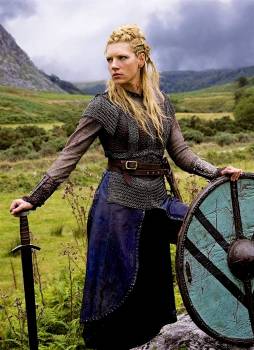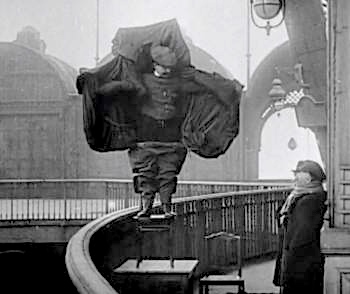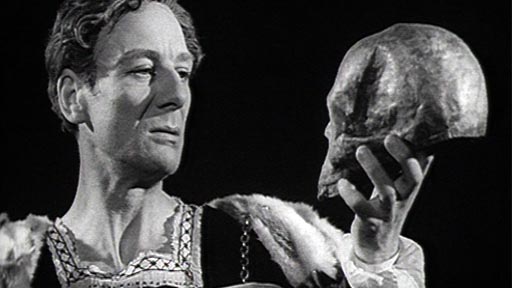“Beyond the window, everything moves [in the storm]: paper trees, toy cars, stick houses, straw dogs. Foam spreads through the streets like a stain…The tide uproots what the wind is unable to demolish. The building withstands the battering. Everyone talks at the same time (twenty scratched records playing at the same time)…an obsession with talking: twelve million scratched records blathering on without stopping. The country is a scratched record (everything repeats itself: every day is a repetition of the day before)….” – the speaker commenting on life in Cuba.
 Canek Sanchez Guevara, author of this novella, died in Mexico 2015 at the age of forty, following heart surgery, and this story was found among his effects. Canek (“Black Serpent,” a Mayan or Incan name) was the oldest grandson of the famed Ernesto “Che” Guevara, an activist physician from Argentina who joined in the planning of the Cuban Revolution after he met Fidel and Raul Castro and other Cuban exiles in Mexico. After a bloody start, their Cuban revolution eventually brought them to power, ousting dictator Fulgencio Batista in 1959. Che himself was eventually assassinated in Bolivia in 1967, but his daughter Hildita and her Mexican husband, Alberto Sanchez, a leftist, remained in Cuba, where Hildita had a job in the Castro propaganda center. Her son Canek, the author of this novella, was born in Havana in 1974, and, with his parents, lived a comfortable life there as Che’s grandson.
Canek Sanchez Guevara, author of this novella, died in Mexico 2015 at the age of forty, following heart surgery, and this story was found among his effects. Canek (“Black Serpent,” a Mayan or Incan name) was the oldest grandson of the famed Ernesto “Che” Guevara, an activist physician from Argentina who joined in the planning of the Cuban Revolution after he met Fidel and Raul Castro and other Cuban exiles in Mexico. After a bloody start, their Cuban revolution eventually brought them to power, ousting dictator Fulgencio Batista in 1959. Che himself was eventually assassinated in Bolivia in 1967, but his daughter Hildita and her Mexican husband, Alberto Sanchez, a leftist, remained in Cuba, where Hildita had a job in the Castro propaganda center. Her son Canek, the author of this novella, was born in Havana in 1974, and, with his parents, lived a comfortable life there as Che’s grandson.
Around 1980, his parents traveled to Milan and Barcelona, where Canek Sanchez Guevara attended school in Catalonia until he was 12, then returned to Havana in 1986. From 1986 – 1996, during his teen years, he lived in Cuba, becoming increasingly depressed by what he saw as the failure of the revolution, the persecution of minorities, the interference of the government in virtually every aspect of citizens’ lives, and the constant surveillance – including of his own life as a heavy metal musician, writer, and photographer. In 1996, at age twenty-two, he left Cuba for Mexico, where he lived for the rest of this life, eventually writing about the failure of the revolution and the betrayal by the Castros of the ideals of freedom and socialism with which they had started the revolution. (Sources: Phil Davison’s article here: http://www.independent.co.uk/ and https://libcom.org/)
In this story which feels like a memoir, Sanchez Guevara offers a short, often poetic, description of the life of one black man as he faces the interminable boredom, the lack of privacy, the “repetitive cycle of routine,” and “repetition after repetition of the scratched record of time and grime.” His use of the scratched record imagery, over and over again – forty repetitions of this image in the space of ninety-four short pages – actually creates within the reader’s own life the same boredom and stultifying lack of variety which the main character feels, and the reader soon begins to feel controlled by some of the same kinds of forces that the author himself dealt with in the overwhelming tedium of a life over which he had little control in Cuba during 1986 – 1996. Each day is like all the others; his job offers no respite; and when he goes to a bar, he sees four men playing dominoes, as they do every day. “There’s never any variation in the parade of white pieces, black dots, double nines, cries, curses. Next to each player, the eternal glass of rum; in the middle, the ashtray full of cigarette butts. This, he thinks is the scratched record of national culture.”

Many Cubans take their chances in overcrowded boats and head across the Caribbean toward Florida for a better life in the 1980s. Photo by Omar Fernandez
Later that evening he walks along the avenue and dances alone in the midst of a commotion, “and he wonders what it means to belong, to be united. Is the communion of other people’s bodies merely the alienation of the ordinary?” He thinks about his failed marriage, then sits along the waterfront. “Watching time pass is the people’s favorite pastime. Not wasting it, which would imply that they had it to waste. The years remain…Time always passes.” When he heads for home, he hears the rumble of a bus behind him, and fearing that he will miss it, he runs for the next stop. A patrol car stops him, interrogates him, then, ultimately, lets him go. “Sorry, comrade. You know how it is. A black man running in the dark is always suspicious.” Upset because the police have “snatched away his dream and something he wouldn’t call pride, let alone dignity, but which is doubtless important,” he realizes that “there is not one iota of greatness in any of this, and he makes a gesture that tries to take in the whole city [of Havana].”
The story continues through its thirty-three short “chapters,” or revolutions, matching the scratched “33” record on the cover and in the pervading imagery. The speaker reminisces about his father, his upbringing, his father’s lack of interest in anything to do with the arts, his own technical studies, his record as a model student, always revealing aspects of life which he noted in Cuba at the time. He discovers reading as an escape, and later music, and then the theatre, but every now and then “he wonders what he’s done to deserve this – to have tastes so alien to the tropics and yet live here…” A sexual encounter with a Russian woman leads to his arrest and torture, though he does not know why, and he wonders, yet again, about the point of life. As each scene – each revolution of the 33 record – takes place with few minor changes, the main character looks for something to keep his mind alive. The gift of a Pentax camera with two lenses and a flash gives him some hope for his future, as a few other people around him simultaneously begin to make moves toward their own futures. The conclusion reconciles the thirty-three scenes/revolutions of the record and provides an answer to the speaker’s quest.
Though the scenes are brief and filled with imagery of the scratched record, almost as frustrating to the reader as the times must have been to the speaker who lived through this period, the author nevertheless manages to recreate a portrait of a person stuck in a life not of his own choosing in a country which does not value individuals or respect their potential. Getting by seems to be the goal of everyone, from the most impoverished individual to those in power, though a person of fewer skills and fewer connections than this speaker would have found life much worse, being focused, of necessity, on finding food and a safe place to stay. This speaker, for all his boredom, is nevertheless luckier than most of his compatriots.
Photos, in order: The author’s photo appears on https://twitter.com/
Che Guevara, grandfather of Canek Sanchez Guevara is shown here: https://selfmedicant.com
During the 1980s, many Cubans took their chances on a new life by boarding overcrowded boats and setting out to sea for Florida and other places. Photo by Omar Fernandez. https://twitter.com
The speaker sees some hope when he receives the gift of a Pentax camera and two lenses. http://camerapedia.wikia.com Pentax 1990 – 1997
ARC: Europa Editions
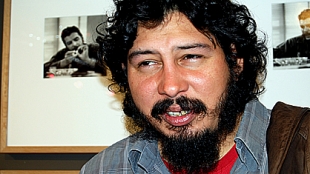
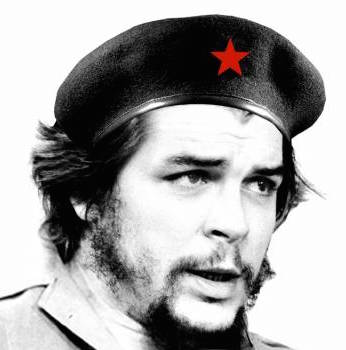

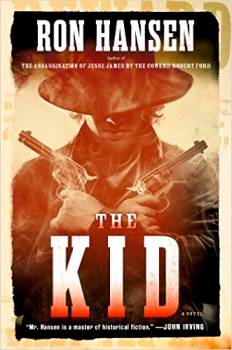 Also attending this meeting about the future of Roswell, New Mexico, is Pat Garrett, a bartender without experience as a detective and no reputation as a gunfighter, who responds, “Elect me sheriff and I’ll be a cold and impersonal legal machine. Without sentiment or malice or resentment, I’ll carry out the law to the last letter.” And after his surprise election, he states that he will be able to quell New Mexico’s outlawry, “because outlaws all have one thing in common: sooner or later they find themselves wanting to get caught.” The scene is finally set for a showdown between those, like twenty-one-year-old outlaw Billy the Kid and his gang members, and those in charge of the cattle interests and businesses in Roswell who want the area to be safe so it can grow. Many of these civic leaders themselves have behaved like outlaws and gang members, but they now see an opportunity to bring about peace while maintaining themselves in a relatively comfortable style, and they are determined now to protect their interests, develop them, and ensure that their investments will pay off. Most of them are no more righteous than the outlaw gangs, but they have more fortuitous connections to the legal and political world.
Also attending this meeting about the future of Roswell, New Mexico, is Pat Garrett, a bartender without experience as a detective and no reputation as a gunfighter, who responds, “Elect me sheriff and I’ll be a cold and impersonal legal machine. Without sentiment or malice or resentment, I’ll carry out the law to the last letter.” And after his surprise election, he states that he will be able to quell New Mexico’s outlawry, “because outlaws all have one thing in common: sooner or later they find themselves wanting to get caught.” The scene is finally set for a showdown between those, like twenty-one-year-old outlaw Billy the Kid and his gang members, and those in charge of the cattle interests and businesses in Roswell who want the area to be safe so it can grow. Many of these civic leaders themselves have behaved like outlaws and gang members, but they now see an opportunity to bring about peace while maintaining themselves in a relatively comfortable style, and they are determined now to protect their interests, develop them, and ensure that their investments will pay off. Most of them are no more righteous than the outlaw gangs, but they have more fortuitous connections to the legal and political world.

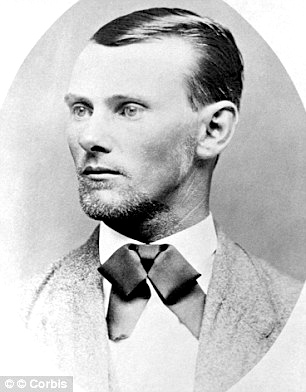

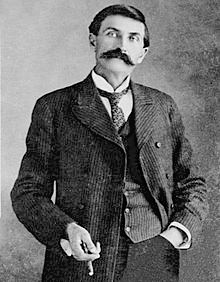
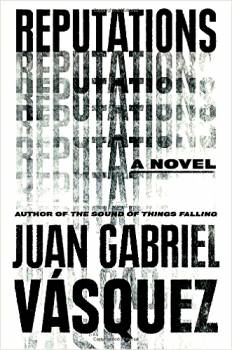 In his first novel published in English since the IMPAC Dublin Award-winning
In his first novel published in English since the IMPAC Dublin Award-winning 


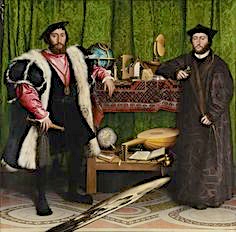
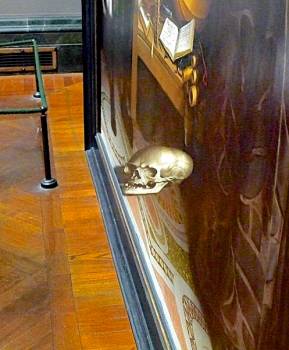

 The quotations which begin my reviews are always chosen to represent the author’s style and some of his/her ideas, but few have ever captured the unique qualities of a book as well as this one. Mai Al-Nakib, an author from Kuwait who got her PhD. in English literature from Brown University, knows how to capture an American audience, and her descriptions and her narrative style in this remarkable collection of stories are so attuned to her characters and subjects that readers will actually experience – not just “learn about” – parts of the world which most of us know only second-hand. Set in Kuwait, Lebanon, and Palestine, and, through the travel of some of these characters, in Japan and Greece, her stories are filled with word pictures so vivid that many readers will come close to feeling the reality of day-to-day life in these places. She opens new worlds, and by the time the collection closes, many readers will be viewing life in these parts of the world with clearer vision and greater empathy.
The quotations which begin my reviews are always chosen to represent the author’s style and some of his/her ideas, but few have ever captured the unique qualities of a book as well as this one. Mai Al-Nakib, an author from Kuwait who got her PhD. in English literature from Brown University, knows how to capture an American audience, and her descriptions and her narrative style in this remarkable collection of stories are so attuned to her characters and subjects that readers will actually experience – not just “learn about” – parts of the world which most of us know only second-hand. Set in Kuwait, Lebanon, and Palestine, and, through the travel of some of these characters, in Japan and Greece, her stories are filled with word pictures so vivid that many readers will come close to feeling the reality of day-to-day life in these places. She opens new worlds, and by the time the collection closes, many readers will be viewing life in these parts of the world with clearer vision and greater empathy.
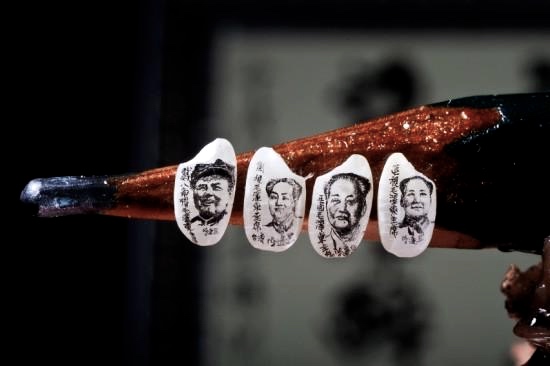
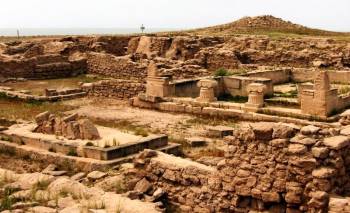

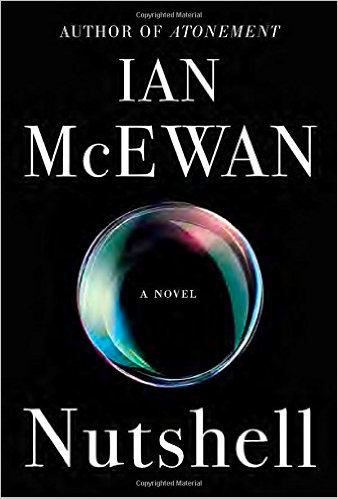 I have to admit that when I read the premise of this novel, I cringed, thinking that it sounded too “cute”- even effete – to be taken seriously; author Ian McEwan relates this entire novel from the point of view of an unborn baby, nine months in the womb. Describing his “living room” with its cramped quarters within his mother Trudy’s belly, the unborn child points out that he has a surprising amount of control over his life, that he can overhear every conversation involving his mother, that he can participate in every physical act involving her, and that he likes his father, John, a poet, even though his mother has left him for a new lover, his father’s younger brother Claude. When the baby gets bored, he knows he can start kicking so that his mother will turn on the radio to calm him down. He enjoys participating in the excessive drinking of alcohol which his mother and her lover Claude enjoy, and though he knows that alcohol may lower his intellect, he finds himself sometimes “pulling on his cord” for “another round.”
I have to admit that when I read the premise of this novel, I cringed, thinking that it sounded too “cute”- even effete – to be taken seriously; author Ian McEwan relates this entire novel from the point of view of an unborn baby, nine months in the womb. Describing his “living room” with its cramped quarters within his mother Trudy’s belly, the unborn child points out that he has a surprising amount of control over his life, that he can overhear every conversation involving his mother, that he can participate in every physical act involving her, and that he likes his father, John, a poet, even though his mother has left him for a new lover, his father’s younger brother Claude. When the baby gets bored, he knows he can start kicking so that his mother will turn on the radio to calm him down. He enjoys participating in the excessive drinking of alcohol which his mother and her lover Claude enjoy, and though he knows that alcohol may lower his intellect, he finds himself sometimes “pulling on his cord” for “another round.”
